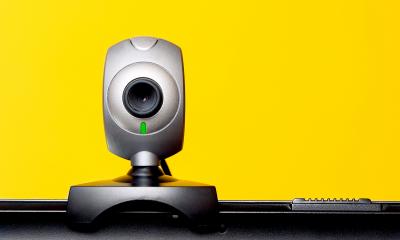
Screen resolution is an IT terms that people use without necessarily knowing exactly what it means. So, what is screen resolution is and why does it matter?
What is screen resolution?
The image on your computer screen is built up from hundreds of thousands – or even millions – of pixels. The screen creates the image you see by changing the colours of these tiny square elements.
To put it simple, screen resolution affects the clarity of the text and images displayed.
The screen resolution is a measurement of how many pixels your screen can display horizontally and vertically. It's written in a standard way. In this example, a 1,920 x 1,080 screen displays 1,920 pixels horizontally, and 1,080 vertically.
Different screen sizes, same resolution
For here on, it gets a little more complicated. Different size screens can still have the same screen resolution.
The prices of screens has fallen dramatically in recent years, so it can be tempting to go for the largest you can afford.
But size isn't the only consideration. You could have a laptop with a 15" screen and a resolution of 1,366 x 786. You could also have a 21" monitor on your desk with the same 1,366 x 786 resolution.
In this example, while the monitor on your desk is larger, it won’t display any more. As you can see, the total number of pixels is the same - everything just looks a bit bigger:

So, when selecting a screen, you must understand both its size and resolution.
What does higher screen resolution mean?
When comparing two screens of the same size but with different resolutions, the screen with the higher resolution (that's the one with more pixels) will display more of what you're working on, so you don't have to scroll so much.
Because that screen has more pixels, the image will be sharper. However, the higher resolution also means that elements on the screen – such as icons and text - will look smaller.
There are more options available than ever when it comes to screen resolution. It’s now possible to buy high-definition (1,366 x 768), full high-definition (1,920 x 1,080), wide ultra-extended graphics array (1,920 x 1,200) and even ultra-high-definition monitors (3,840 x 2,160), and 4K monitors.
It's not just about display resolution
When you're shopping for a new computer or display monitor, don't let yourself be guided by screen resolution alone. Brightness and colour representation can vary across screens, so the best way to choose is to sit down in front of a screen and use it.
There are a few rules of thumb to help you choose the right resolution:
- If you're buying a monitor for your desk, go for a 21" screen or larger, with a resolution of at least 1,920 x 1,080 or more. This is known as a full-HD screen, because the resolution can display high-definition video.
- If you're buying a laptop that you’ll primarily use with a separate monitor, the standard screen should be fine. Higher resolution laptop screens can cost lots more than standard models, and aren't worth the expense if you’ll only use them occasionally.
- Graphic designers or web developers who need to access lots of different windows at once can benefit from specialist, high-resolution screens. If you're feeling flush, Apple's 16" MacBook Pro with Retina display boasts True Tone technology and a high contrast ratio to deliver deeper blacks and more vibrant whites.
Written by John McGarvey.


